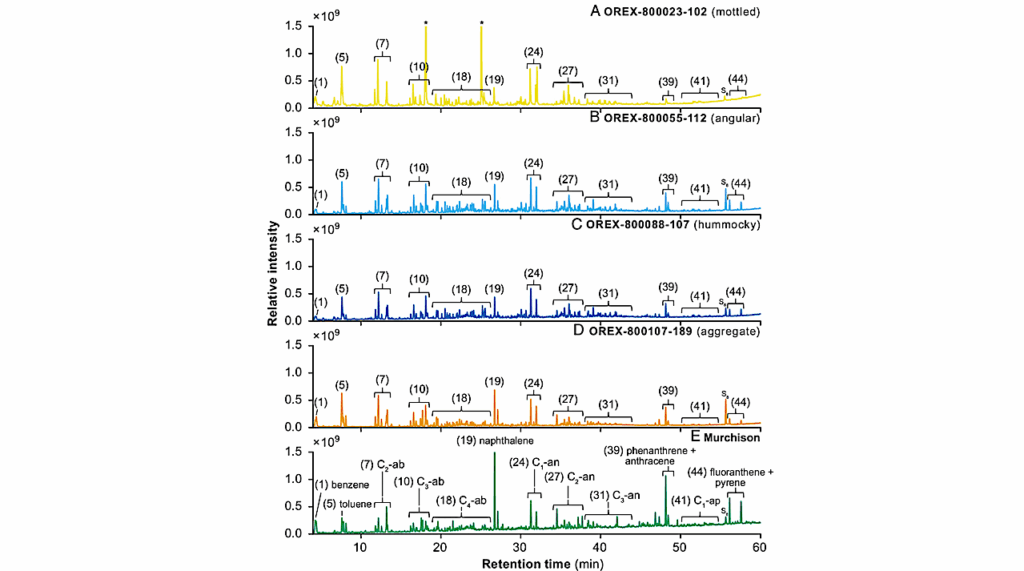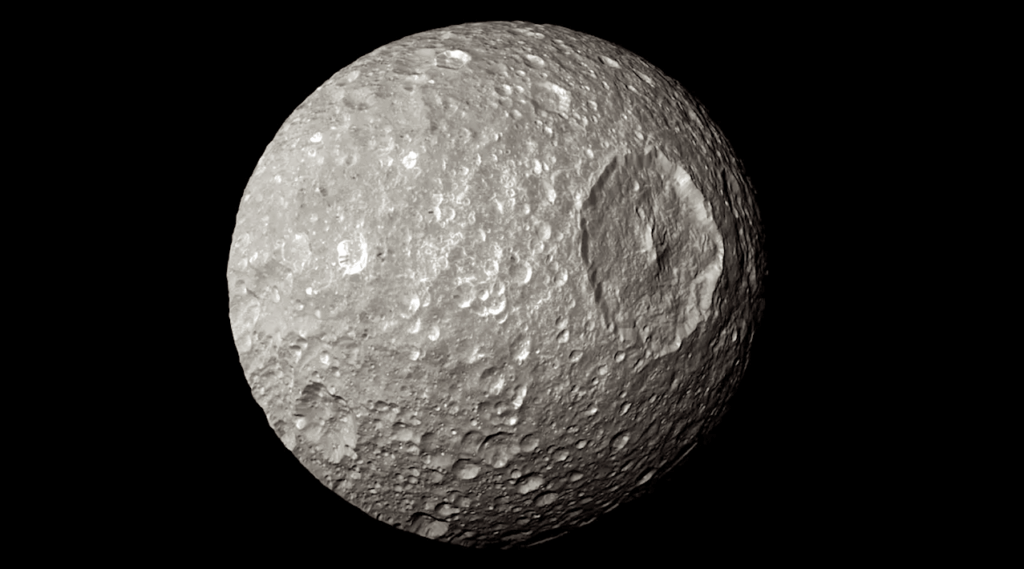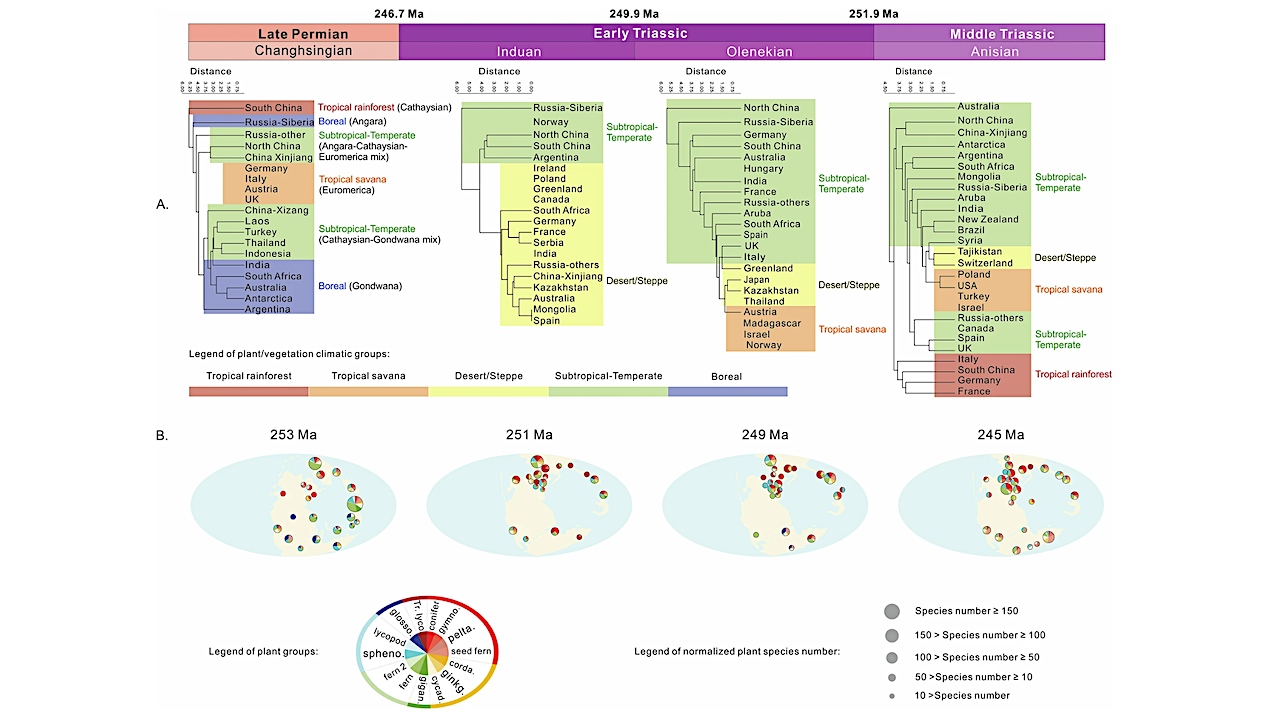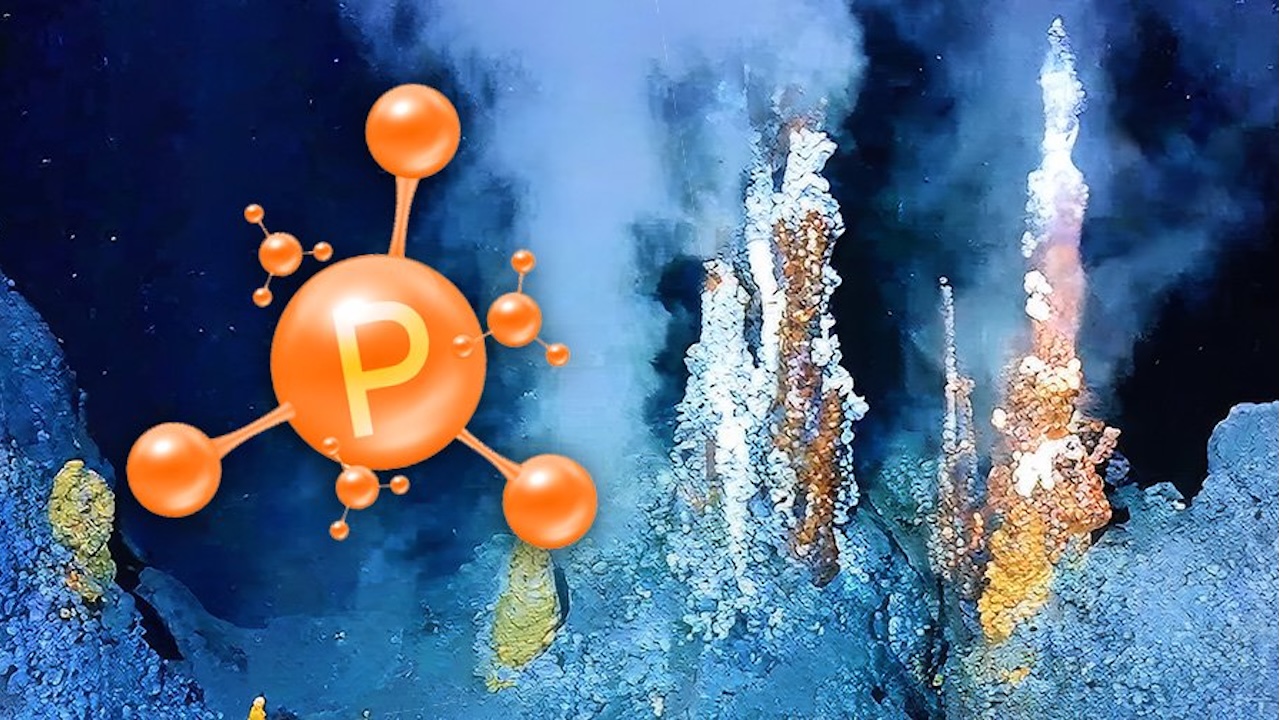Now Reading: Dynamical Origin Of Theia, The Last Giant Impactor On Earth
-
01
Dynamical Origin Of Theia, The Last Giant Impactor On Earth
Dynamical Origin Of Theia, The Last Giant Impactor On Earth
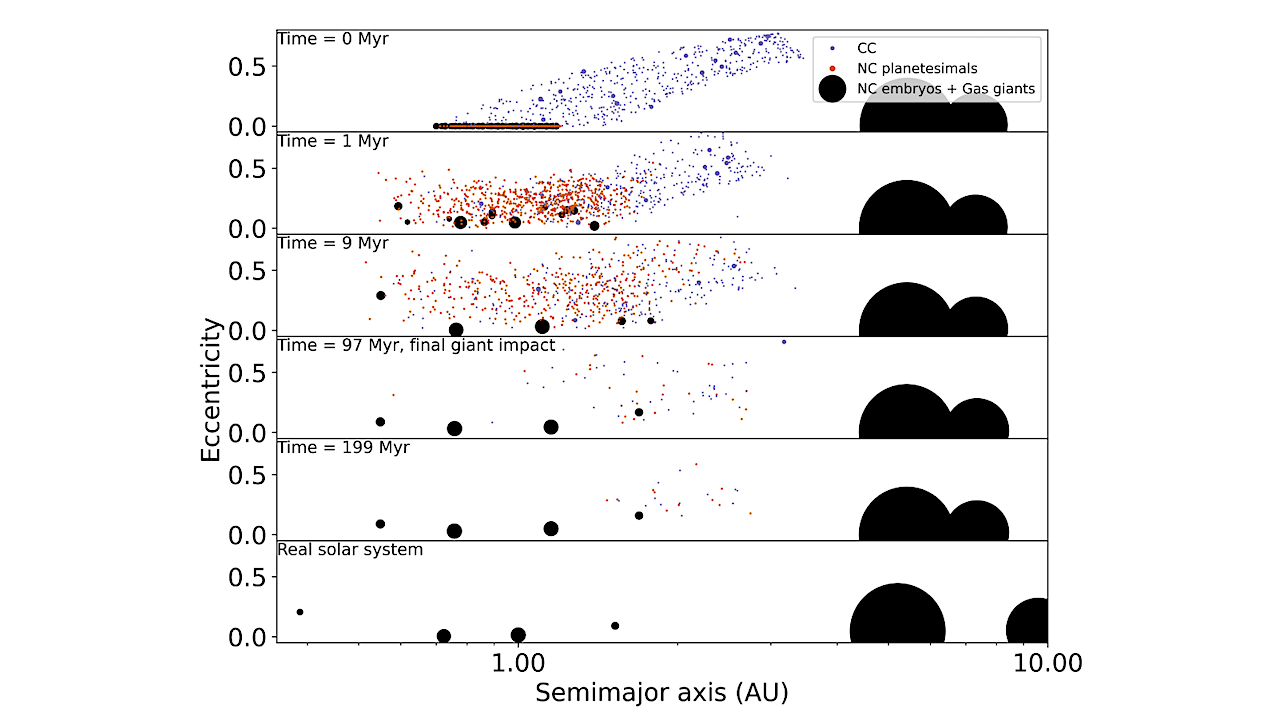

Eccentricity and position snapshots over time of a simulation using the mixed scenario where all 4 terrestrial planets fit constraints and the Earth analogue had a final CC embryo impact. Snapshots are shown over time, including the moment after the final giant impact. The initial NC embryos and planetesimals are shown with the embryos in black and the planetesimals in orange, as well as the CC embryos and planetesimals in blue with Jupiter and Saturn in black on the far right. The final snapshot is the real solar system. — astro-ph.EP
Cosmochemical studies have proposed that Earth accreted roughly 5-10% of its mass from carbonaceous (CC) material, with a large fraction delivered late via its final impactor, Theia (the Moon-forming impactor). ‘
Here, we evaluate this idea using dynamical simulations of terrestrial planet formation, starting from a standard setup with a population of planetary embryos and planetesimals laid out in a ring centered between Venus and Earth’s orbits, and also including a population of CC planetesimals and planetary embryos scattered inward by Jupiter.
We find that this scenario can match a large number of constraints, including i) the terrestrial planets’ masses and orbits; ii) the CC mass fraction of Earth; iii) the much lower CC mass fraction of Mars, as long as Mars only accreted CC planetesimals (but no CC embryos); iv) the timing of the last giant (Moon-forming) impact; and v) a late accretion phase dominated by non-carbonaceous (NC) bodies.
For this scenario to work, the total mass in scattered CC objects must have been ~ 0.2 – 0.3 M⊕ , with an embryo-to-planetesimal mass ratio of at least 8, and CC embryos in the ~ 0.01 – 0.05 M⊕ mass range.
In that case, our simulations show there are roughly 50-50 odds of Earth’s last giant impactor (Theia) having been a carbonaceous object – either a pure CC embryo or an NC embryo that previously accreted a CC embryo. Our simulations thus provide dynamical validation of cosmochemical studies.
Duarte Branco, Sean N. Raymond, Pedro Machado
Comments: 20 pages, 11 figures, to be published in Icarus
Subjects: Earth and Planetary Astrophysics (astro-ph.EP)
Cite as: arXiv:2507.01826 [astro-ph.EP] (or arXiv:2507.01826v1 [astro-ph.EP] for this version)
https://doi.org/10.48550/arXiv.2507.01826
Focus to learn more
Submission history
From: Duarte Branco
[v1] Wed, 2 Jul 2025 15:41:34 UTC (2,574 KB)
https://arxiv.org/abs/2507.01826
Astrobiology,
Stay Informed With the Latest & Most Important News
Previous Post
Next Post
-
 012024 in Review: Highlights from NASA in Silicon Valley
012024 in Review: Highlights from NASA in Silicon Valley -
 02Panasonic Leica Summilux DG 15mm f/1.7 ASPH review
02Panasonic Leica Summilux DG 15mm f/1.7 ASPH review -
 03How New NASA, India Earth Satellite NISAR Will See Earth
03How New NASA, India Earth Satellite NISAR Will See Earth -
 04And Thus Begins A New Year For Life On Earth
04And Thus Begins A New Year For Life On Earth -
 05Astronomy Activation Ambassadors: A New Era
05Astronomy Activation Ambassadors: A New Era -
06SpaceX launch surge helps set new global launch record in 2024
-
 07Space Force plans new ‘Futures Command’ amid pressure to speed up modernization
07Space Force plans new ‘Futures Command’ amid pressure to speed up modernization













